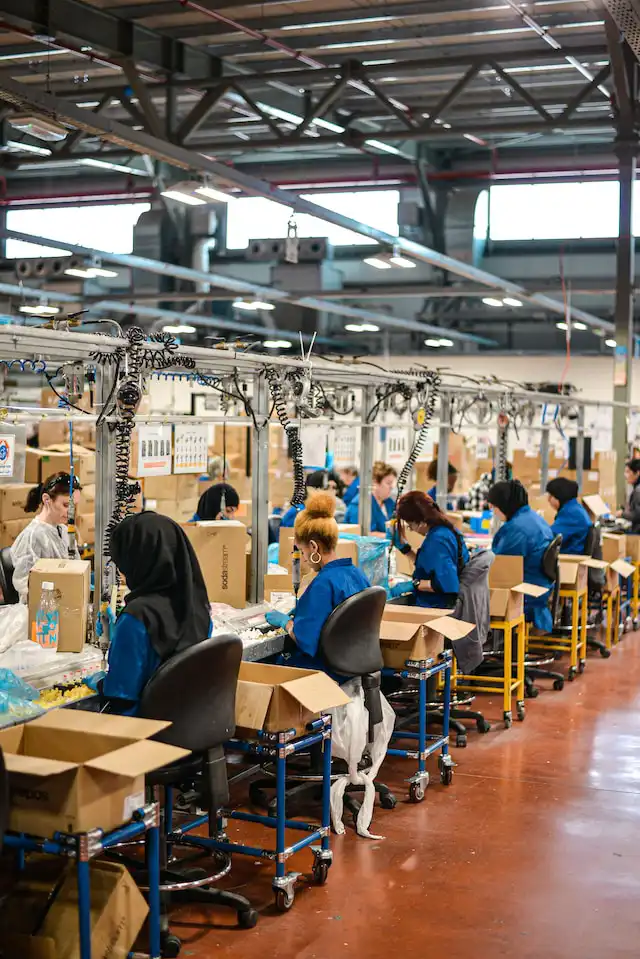
Europe Ceramic Industry Outlook to 2018
Rising Consolidation and Favorable Government Regulations to Lead Towards Industry Transformation
Region:Europe
Product Code:KR228
August 2014
188
About the Report
The report titled ‘Europe Ceramic Industry Outlook to 2018 – Rising Consolidation and Favorable Government Regulations to Lead Towards Industry Transformation’ presents a comprehensive analysis of the ceramic products aspects including market size of ceramic industry in Europe by sales and production value along with the market segmentation by different types of products such as ceramic tiles, bricks and roof tiles, tableware, sanitaryware, refractories and technical ceramics and by geography (Italy, Germany, UK, Spain, France). The report also entails a detailed description on the recent trends and developments in the market, government regulations, major challenges and opportunities, recent industry activities including mergers and acquisitions and competitive scenario of major players in the industry along with market share of major companies in the industry.
The ceramic industry in Europe is a strategic and growth oriented industry and has gained huge importance during the past six years (2008-2013). The industry has witnessed many challenges during the past few years which hindered the growth and resulted in decline in productivity and profitability of the entire sector. The ceramic industry has witnessed a fluctuating growth over the period of 2008-2013, mainly on account of increased competitiveness from emerging economies outside Europe such as China, Brazil, Italy, UAE and others which are offering low-cost ceramic products, thereby diminishing European Union’s competitive advantage on the basis of cost. Rising prices of raw-materials from Asian countries, higher energy cost and sluggish European economy are some of the other major challenges which restrict the growth of European Union’s ceramic industry. The production value of Europe ceramic industry declined to USD ~ million in 2013 as compared to USD ~ million in 2008 at a CAGR of -5.5%.
The growth in the EU ceramic industry is largely driven by Italy and Germany which have emerged as the largest producers of ceramic products. The growth in Italy is largely driven by the SME’s in the wall and floor tiles sector, who offer innovative, specialized ceramic products that difficult to imitate and target niche segments of the market. In the year 2013, Italy accounted for the highest contribution of ~ % of the total production value in the EU ceramic industry, followed by Germany with a share of ~ % in 2013 and generating production value worth USD ~ million during the year.
The competitive landscape of ceramic tiles market is marked by the presence of many local, international companies as well as small establishments, thus making the market highly unorganized.
The future of European ceramic sector looks promising mainly on account of rising level of industry consolidation and continuous efforts made by European companies to develop innovative ceramic products by making significant Research & Development investments. Additionally, increased environment regulations and raw material cost has pushed the ceramic players to indulge into energy efficient production processes such as Carbon Capture and Storage technology which will help in reducing indirect carbon emissions during energy intensive manufacturing processes, thereby lowering the overall cost of production. The industry is expected to become highly competitive owing to the advent of several global players. Furthermore, market players who can offer the right mix of price, innovative technology and services can thrive and gain stable market position in the European ceramic industry.
Key Topics Covered in the Report:
- The market size of Europe ceramic industry in terms of sales and production value.
- Europe market segmentation by geographies covering Italy, Germany, Spain, France and the UK.
- Europe market segmentation by products covering ceramic tiles, sanitaryware, tableware, bricks and roof tiles, abrasives and technical ceramics.
- Export and import scenario of ceramic products in Europe.
- Recent industry activities in Europe ceramic industry.
- Trends, opportunities and challenges in Europe ceramic industry.
- Future outlook and projections of ceramic products in Europe
- Italy ceramic market size, segmentation, export import scenario, market share of major companies in the industry.
- Germany market size, segmentation, market share of major companies in the industry.
- Spain ceramic market size, segmentation, drivers and issues, market share of major companies in the industry.
- France ceramic market size, segmentation, market share of major companies in the industry.
- France ceramic market size, segmentation, market share of major companies in the industry.
- Competitive landscape of major companies operating in Italy, Germany, Spain, France and the UK ceramic industry.
- Future outlook and macroeconomic factors in ceramic industry in Italy, Germany, Spain, France and the UK.
Products
ceramic tiles, sanitaryware, tableware, bricks and roof tiles, abrasives and technical ceramics.
Companies
Marazzi group, Atlas Concorde Group, Fiandre-Iris Group, Finfloor, Panaria, Serenissima Group, ABK group, Sanitec, Villeroy & Boch, Duravit, Kohler, Pamesa Ceramica, Porcelanosa, Roca Group, Keramex, Keraben and Azteca, Imerys, Terreal, Wienerberger
Table of Contents
1. Europe Ceramic Industry Introduction
1.1. Structure of Europe Ceramic Industry
1.2. Europe Ceramic Industry Market Size
1.2.1. By Production Value, 2008-2013
1.2.2. By Sales Value, 2008-2013
1.3. Europe Ceramic Market Segmentation
1.3.1. By Products, Wall & Floor Tiles, Bricks & Roof Tiles, Refractories, Abrasives, Technical Ceramics, Tableware and Sanitaryware, 2008-2013
1.3.1.1. Europe Ceramic Tiles Introduction and Market Size by Consumption Volume, 2008-2013
1.3.1.1.1. Europe Import and Export Market of Ceramic Tiles by Volume, 2008-2011
1.3.2. By Geography, 2008-2013
1.4. Import and Export in Europe Ceramic Industry, 2010-2013
Exports
Imports
1.5. Trends and Developments in Europe Ceramic Industry
1.6. Major Challenges in Europe Ceramic Industry
1.7. Government Regulations in Europe Ceramic Industry
1.8. Major Opportunities in Europe Ceramic Industry
1.9. Recent Industry Activities in Europe Ceramic Market
1.10. Europe Ceramic Industry Future Outlook and Projections, 2014-2018
1.10.1. By Products, Wall & Floor Tiles, Bricks & Roof Tiles, Refractories, Abrasives, Technical Ceramics, Tableware and Sanitaryware, 2014-2018
1.10.2. By Geography, 2014-2018
1.11. Cause and Effect Relationship in Europe Ceramic Industry
1.12. Macro-Economic Factors of Europe Ceramic Industry
1.12.1. GDP of European Union, 2008-2018
1.12.2. Electricity Prices for Industrial Customers in European Union, 2008-2018
1.12.3. Gas Prices of Industrial Customers in European Union, 2008-2018
1.12.4. Construction Industry in European Union, 2008-2018
2. Italy Ceramic Market Introduction
2.1. Italy Ceramic Market Size by Production and Sales Value, 2008-2013
2.2. Italy Ceramic Market Segmentation
2.2.1. By Products, Wall & Floor, Refractories & Technical Ceramics, Sanitaryware, Tableware and Others, 2008-2013
2.3. Italy Ceramic Tiles Market Introduction
2.3.1. Italy Ceramic Tiles Market Size, 2008-2013
2.3.1.1. By Sales Value, 2008-2013
2.3.1.2. By Production and Sales Volume, 2008-2013
2.3.2. Italy Ceramic Tiles Market Segmentation
2.3.2.1. By Glazed and Unglazed, 2008-2013
2.3.2.2. By Export and Domestic Sales Value and Volume, 2008-2013
2.3.3. Export and Import of Italian Ceramic Tiles by Volume, 2008-2013
2.4. Italy Sanitaryware Market Introduction
2.4.1. Italy Sanitaryware Market Size
2.4.1.1. By Sales Value, 2008-2013
2.4.1.2. By Production and Sales Volume, 2008-2013
2.4.2. Italy Sanitary Ware Market Segmentation
2.4.2.1. By Export and Domestic Sales Value, 2008-2013
2.4.2.2. By Export and Domestic Sales Volume, 2008-2013
2.5. Italy Refractory and Technical Ceramics Market Introduction
2.5.1. Italy Refractory and Technical Ceramics Market Size
2.5.1.1. By Sales Value, 2011-2013
2.5.1.2. By Production and Sales Volume, 2011-2013
2.6. Italy Ceramic Tableware Market Introduction
2.6.1. Italy Ceramic Tableware Market Size
2.6.1.1. By Sales Value, 2010-2013
2.6.1.2. By Production and Sales Volume, 2010-2013
2.7. Market Share of Major Players in Italy Ceramic Tiles Market, 2013
2.8. Competitive Landscape of Major Players in Italy Ceramic Market
2.9. Italy Ceramic Market Future Outlook and Projections, 2014-2018
2.9.1. By Production and Sales Value, 2014-2018
2.9.2. By Products, Wall & Floor, Refractories & Technical Ceramics, Sanitaryware, Tableware and Others, 2014-2018
2.10. Macro-Economic Factors of Italy Ceramic Market
2.10.1. GDP of Italy, 2008-2018
2.10.2. Electricity Prices for Industrial Customers, 2008-2018
2.10.3. Gas Prices for Industrial Customers, 2008-2018
2.10.4. Construction Market in Italy, 2008-2018
3. Germany Ceramic Market Introduction
3.1. Germany Ceramic Market Size by Production and Sales Value, 2008-2013
3.2. Germany Ceramic Market Segmentation
3.2.1. By Products, Bricks & Roof Tiles, Tableware, Sanitaryware, Wall & Floor Tiles and Others, 2008-2013
3.3. Germany Ceramic Tiles Introduction and Market Size by Production and Consumption Volume, 2008-2013
3.3.1. Germany Ceramic Tiles Market Segmentation by Glazed and Unglazed, 2008-2013
3.3.2. Germany Import and Export Market of Ceramic Tiles by Volume, 2008-2013
3.4. Market Share of Major Players in Germany Sanitaryware Market, 2013
3.5. Competitive Landscape of Major Players in Germany Ceramic Market
3.6. Germany Ceramic Market Future Outlook and Projections, 2014-2018
3.6.1. By Production and Sales Value, 2014-2018
3.6.2. By Products - Bricks & Roof Tiles, Tableware, Sanitaryware, Wall & Floor Tiles and Others, 2014-2018
3.7. Macro-Economic Factors of Germany Ceramic Market
3.7.1. GDP of Germany, 2008-2018
3.7.2. Electricity Prices for Industrial Customers, 2008-2018
3.7.3. Gas Prices for Industrial Customers, 2008-2018
3.7.4. Construction Market in Germany, 2008-2018
4. Spain Ceramic Market Introduction
4.1. Spain Ceramic Market Size
4.1.1. By Production and Sales Value, 2008-2013
4.2. Spain Ceramic Market Segmentation
4.2.1. By Products - Wall & Floor Tiles, Bricks & Roof Tiles, Sanitaryware, Refractories, Technical Ceramics, Tableware and Abrasives, 2008-2013
4.2.1.1. Spain Ceramic Tiles Introduction and Market Size by Production Volume, 2008-2013
4.2.1.1.1. Spain Ceramic Tiles Market Segmentation by Glazed and Unglazed, 2008-2013
4.3. Market Share of Major Players in Spain Ceramic Tiles Market, 2013
4.4. Competitive Landscape of Major Players in Spain Ceramic Market
4.5. Spain Ceramic Market Future Outlook and Projections, 2014-2018
4.5.1. By Production and Sales Value, 2014-2018
4.5.2. By Products, Wall & Floor Tiles, Bricks & Roof Tiles, Sanitaryware, Refractories, Technical Ceramics, Tableware and Abrasives 2014-2018
4.6. Macro-Economic Factors of Spain Ceramic Market
4.6.1. GDP of Spain, 2008-2018
4.6.2. Electricity Prices for Industrial Customers, 2008-2018
4.6.3. Gas Prices for Industrial Customers, 2008-2018
4.6.4. Construction Market in Spain, 2008-2018
5. France Ceramic Market Introduction
5.1. France Ceramic Market Size
5.1.1. By Production and Sales Value, 2008-2013
5.2. France Ceramic Market Segmentation
5.2.1. By Products, Bricks & Roof Tiles, Wall & Floor Tiles, Sanitaryware, Tableware, Technical Ceramics Refractories and Abrasives, 2008-2013
5.2.1.1. France Ceramic Tiles Market Introduction and Market Size by Consumption Volume, 2008-2013
5.2.1.1.1. France Ceramic Tiles Market Segmentation by Glazed and Unglazed, 2008-2013
5.3. Market Share of Major Players in France Ceramic Bricks & Roof Tiles and Sanitaryware Market, 2013
5.4. Competitive Landscape of Major Players in France Ceramic Market
5.5. France Ceramic Market Future Outlook and Projections, 2014-2018
5.5.1. By Production and Sales Value, 2014-2018
5.5.2. By Products, Bricks & Roof Tiles, Wall & Floor Tiles, Sanitaryware, Tableware, Technical Ceramics Refractories and Abrasives, 2014-2018
5.6. Macro-Economic Factors of France Ceramic Market
5.6.1. GDP of France, 2008-2018
5.6.2. Electricity Prices for Industrial customers, 2008-2018
5.6.3. Gas Prices for Industrial customers, 2008-2018
5.6.4. Construction Market in France, 2008-2018
6. The UK Ceramic Market Introduction
6.1. The UK Ceramic Market Size, 2008-2013
6.1.1. By Production Value and Sales Value, 2008-2013
6.2. The UK Ceramic Market Segmentation
6.2.1. By Products, Bricks & Roof Tiles, Tableware, Refractories Sanitaryware, Wall & Floor Tiles, Technical Ceramics and Abrasives, 2008-2013
6.2.1.1. Ceramic Tiles Market Segmentation by Glazed and Unglazed, 2008-2013
6.3. Market Share of Major Players in the UK Ceramic Industry, 2013
6.3.1. Market Share of Major Players in the UK Ceramic Tableware Market, 2013
6.3.2. Market Share of Major Players in the UK Ceramic Bricks and Roof Tiles Market, 2013
6.4. Competitive Landscape of Major Players in the UK Ceramic Market
6.5. The UK Ceramic Market Future Outlook and Projections, 2014-2018
6.5.1. By Production and Sales Value, 2014-2018
6.5.2. By Products, Bricks & Roof Tiles, Tableware, Refractories Sanitaryware, Wall & Floor Tiles, Technical Ceramics and Abrasives, 2014-2018
6.6. Macro-Economic Factors of The UK Ceramic Market
6.6.1. GDP of the UK, 2008-2018
6.6.2. Electricity Prices for Industrial Customers, 2008-2018
6.6.3. Gas Prices for Industrial Customers, 2008-2018
6.6.4. Construction Market in the UK, 2008-2018
7. Appendix
7.1. Market Definition
7.2. Abbreviations
7.3. Research Methodology
Data Collection Methods
Approach
Variables (Dependent and Independent)
Multi Factor Based Sensitivity Model
Final Conclusion
7.4. Disclaimer
Why Buy From Us?

What makes us stand out is that our consultants follows Robust, Refine and Result (RRR) methodology. i.e. Robust for clear definitions, approaches and sanity checking, Refine for differentiating respondents facts and opinions and Result for presenting data with story

We have set a benchmark in the industry by offering our clients with syndicated and customized market research reports featuring coverage of entire market as well as meticulous research and analyst insights.

While we don't replace traditional research, we flip the method upside down. Our dual approach of Top Bottom & Bottom Top ensures quality deliverable by not just verifying company fundamentals but also looking at the sector and macroeconomic factors.

With one step in the future, our research team constantly tries to show you the bigger picture. We help with some of the tough questions you may encounter along the way: How is the industry positioned? Best marketing channel? KPI's of competitors? By aligning every element, we help maximize success.

Our report gives you instant access to the answers and sources that other companies might choose to hide. We elaborate each steps of research methodology we have used and showcase you the sample size to earn your trust.

If you need any support, we are here! We pride ourselves on universe strength, data quality, and quick, friendly, and professional service.















